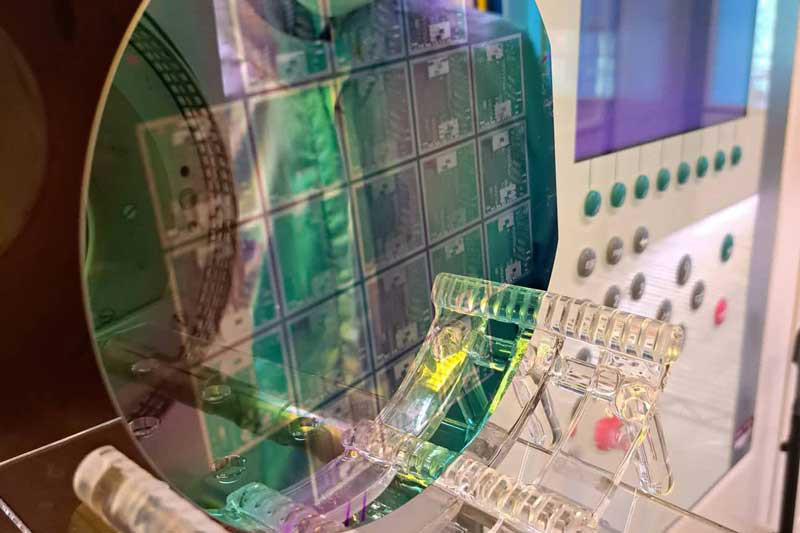
17 Jan Analyzing food with entangled photons
Authenticity tests in laboratories can help to determine whether the declared geographical origin of food is correct, whether certain ingredients such as palm oil have actually been omitted, or whether no other ingredients have been added. Until now, nuclear magnetic resonance (NMR) spectroscopy has been used for these analyses. NMR spectroscopy makes it possible to uniquely identify almost any organic substance in a given sample. However, the analyses are very expensive – the equipment needed for them is large, complex and costs several million euros.
The BMBF-funded project QSPEC aims to develop an alternative testing method. “We are researching a method that uses entangled photons to measure the substance to be analyzed at one wavelength and detect the information obtained from it at another wavelength,” explains Dr. Stephan Suckow, head of the nanophotonics group at Amo and joint coordinator of the project. Other project partners are the Laser Zentrum Hannover (LZH), the Photonic Quantum Technologies group at the Leibniz Universität Hannover (LUH), Toptica Photonics, Amotronics and the German Institute of Food Technologies (DIL).
Spectroscopy with photon pairs
“In the first step, an entangled photon pair consisting of a long-wavelength and a short-wavelength photon is generated,” Suckow further explains. The long-wavelength photon now interacts with the sample, changing its phase, for example. This manipulated photon pair is now fed into another process in which yet another photon pair is generated. The information contained in the pair is transformed by quantum interference so that it can finally be read out simply by the count rate of the short-wavelength photons. As carriers of information, the short-wavelength photons are particularly easy to measure with current technology. The bandwidth of the photon pairs makes it possible to spectrally resolve the sample. “The resulting spectra of the individual food samples are like fingerprints in this process,” explains Suckow “We can then compare these fingerprints with other reference samples and thus draw conclusions about ingredients and geographical characteristics.”
Technical developments in cooperation

Integrated nanophotonic chips are needed to develop a compact system for food analysis in the QPSPEC project. Image: Amo
Necessary for the generation of the quantum frequency combs are novel laser beam sources, which LZH and Toptica will develop for the project. Amo will use nanolithographic methods to create chips that accommodate the necessary technology in a very small space. Amotronics will contribute the ultrafast electronics required for detection. At LUH, the individual components will then be combined into a system so that DIL can test the new method and build a reference library.
Source and image: www.lzh.de/en






